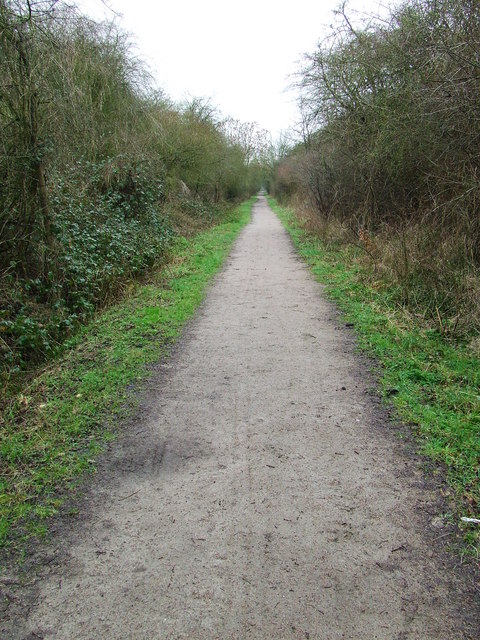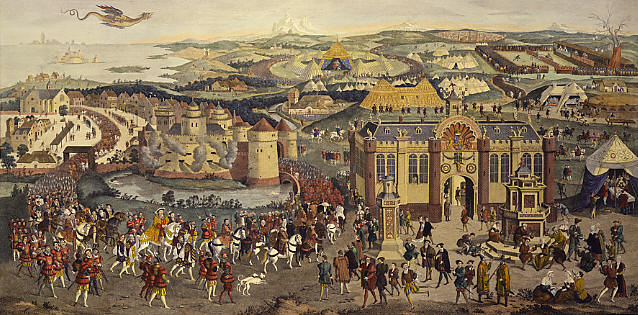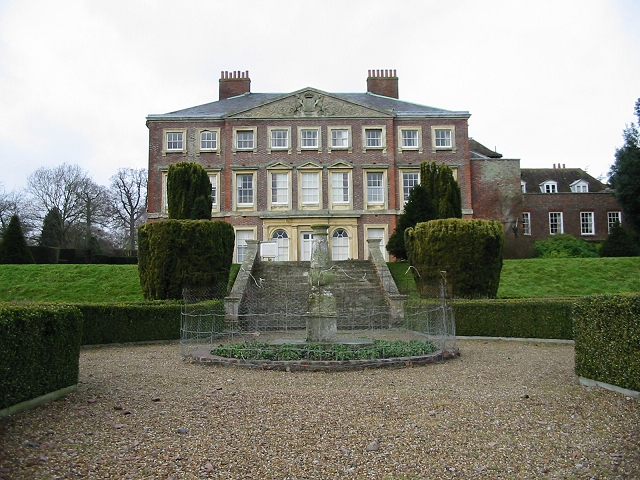|
Little Dunmow
Little Dunmow is a village situated in rural Essex, England, in the vale of the River Chelmer about east-southeast of the town of Great Dunmow. It can be reached from the Dunmow South exit of the A120 by following the road towards Braintree (B1256) for 3.2 km before turning right for the village. The centre of the old village, which has just 99 dwellings, is a further 0.6 km along the road. The Flitch Way, a linear country park along the route of the old Braintree to Bishop's Stortford railway, links Little Dunmow and the new settlement of Flitch Green. The new village, built on the site of a former sugar beet factory, is a self-contained community of 850 dwellings and is another kilometre along the road towards Felsted. History Feudal Barony Little Dunmow formed the caput of a feudal barony the first holder of which was Ralph Baynard, as recorded in the Domesday Book of 1086. He was the builder of Baynard's Castle in the City of London and was followed by his ... [...More Info...] [...Related Items...] OR: [Wikipedia] [Google] [Baidu] |
Uttlesford
Uttlesford is a local government district in Essex, England. Its council is based in the market town of Saffron Walden. At the 2011 Census, the population of the district was 79,443. Other notable settlements include Great Dunmow, Elmdon, Stebbing, Stansted Mountfitchet, Thaxted, Debden, Little Chesterford and Felstead among other settlements. History Its name is derived from its location within the ancient Hundred (county subdivision), hundred of Uttlesford,Open Domesday: Hundred of Uttlesford. Accessed 6 January 2022. usually spelled ''Vdelesford'' Open Domesday: Saffron Walden. Accessed 6 January 2022. or ''Wdelesford'' [...More Info...] [...Related Items...] OR: [Wikipedia] [Google] [Baidu] |
Robert Fitz Richard
__NOTOC__ Robert Fitz Richard (1064–1136) was an Anglo-Norman feudal baron of Little Dunmow, Essex and constable of Baynard's Castle in the City of London. His feudal barony, the caput of which was at Little Dunmow in Essex, was granted to him by the king after it had been forfeited in 1110 by William Baynard, whose grandfather Ralph Baynard was the first holder and the builder of Baynard's Castle in the City of London. Robert was steward under King Henry I (1100–1135) and under King Stephen (1135–1154). Family Robert was the son of Sir Richard Fitz Gilbert, Lord of Clare and Tonbridge (c. 1030–1091) and Rohese Giffard, (b. c. 1034), daughter of Sir Walter Giffard, Lord of Longueville, and Agnes Flatel. Robert married (c. 1114), Matilda de St. Liz (Maud), daughter of Sir Simon de St Liz, Earl of Northampton, and Maud de Huntingdon. Children were: *Sir Walter Fitz Robert, (b. c. 1124), married Maud de Lucy. The ''Magna Carta'' surety, Robert Fitzwalter, was their ... [...More Info...] [...Related Items...] OR: [Wikipedia] [Google] [Baidu] |
Robert Radcliffe, 1st Earl Of Sussex
Robert Radcliffe, 10th Baron Fitzwalter, 1st Earl of Sussex, KG, KB, PC (c. 148327 November 1542), also spelt Radclyffe, Ratcliffe, Ratcliff, etc., was a prominent courtier and soldier during the reigns of Henry VII and Henry VIII who served as Chamberlain of the Exchequer and Lord Great Chamberlain. Family Robert Radcliffe, born about 1483, was the only son of John Radcliffe (1452-1496), 9th Baron FitzWalter, and Margaret Whetehill, widow of Thomas Walden, gentleman, and daughter of Robert Whetehill, esquire, by his wife, Joan. Radcliffe had five sisters, Mary, the wife of Sir Edward Darrell; Bridget; Ursula; Jane, a nun; and Anne, wife of Sir Walter Hobart. Career In October 1495 Robert Radcliffe's father was attainted of high treason for confederacy with the pretender, Perkin Warbeck, by which all his honours were forfeited. His life was spared, and he was imprisoned at Guisnes. After he unsuccessfully attempted to escape, he was beheaded at Calais about 24 November 149 ... [...More Info...] [...Related Items...] OR: [Wikipedia] [Google] [Baidu] |
Advowson
Advowson () or patronage is the right in English law of a patron (avowee) to present to the diocesan bishop (or in some cases the ordinary if not the same person) a nominee for appointment to a vacant ecclesiastical benefice or church living, a process known as ''presentation'' (''jus praesentandi'', Latin: "the right of presenting"). The word derives, via French, from the Latin ''advocare'', from ''vocare'' "to call" plus ''ad'', "to, towards", thus a "summoning". It is the right to nominate a person to be parish priest (subject to episcopal – that is, one bishop's – approval), and each such right in each parish was mainly first held by the lord of the principal manor. Many small parishes only had one manor of the same name. Origin The creation of an advowson was a secondary development arising from the process of creating parishes across England in the 11th and 12th centuries, with their associated parish churches. A major impetus to this development was the legal exac ... [...More Info...] [...Related Items...] OR: [Wikipedia] [Google] [Baidu] |
Manorialism
Manorialism, also known as the manor system or manorial system, was the method of land ownership (or "tenure") in parts of Europe, notably France and later England, during the Middle Ages. Its defining features included a large, sometimes fortified manor house in which the lord of the manor and his dependents lived and administered a rural estate, and a population of labourers who worked the surrounding land to support themselves and the lord. These labourers fulfilled their obligations with labour time or in-kind produce at first, and later by cash payment as commercial activity increased. Manorialism is sometimes included as part of the feudal system. Manorialism originated in the Roman villa system of the Late Roman Empire, and was widely practiced in medieval western Europe and parts of central Europe. An essential element of feudal society, manorialism was slowly replaced by the advent of a money-based market economy and new forms of agrarian contract. In examining the o ... [...More Info...] [...Related Items...] OR: [Wikipedia] [Google] [Baidu] |
Parish Church
A parish church (or parochial church) in Christianity is the church which acts as the religious centre of a parish. In many parts of the world, especially in rural areas, the parish church may play a significant role in community activities, often allowing its premises to be used for non-religious community events. The church building reflects this status, and there is considerable variety in the size and style of parish churches. Many villages in Europe have churches that date back to the Middle Ages, but all periods of architecture are represented. Roman Catholic Church Each diocese (administrative unit, headed by a Bishop) is divided into parishes. Normally, a parish comprises all Catholics living within its geographically defined area. Within a diocese, there can also be overlapping parishes for Catholics belonging to a particular rite, language, nationality, or community. Each parish has its own central church called the parish church, where religious services take pla ... [...More Info...] [...Related Items...] OR: [Wikipedia] [Google] [Baidu] |
Little Dunmow Priory
Little Dunmow Priory in Little Dunmow was an Augustinian priory in Essex, England. The priory was founded as a church by Juga de Baynard in 1104, dedicated to the Blessed Virgin Mary and consecrated by Maurice, bishop of London. Juga was the widow of Ralph Baynard, baron of Little Dunmow, sheriff of Essex and builder of Baynard's Castle in the City of London, since demolished. Her son Geoffrey was sheriff of Yorkshire who, in 1097, beat William II, Count of Eu in a trial by battle. After her death (c.1106), and following her wishes and the advice of Anselm, bishop of Canterbury, Geoffrey populated Juga’s church with Augustinian canons. In 1110, Lady Juga’s grandson, and Geoffrey’s son, William de Baynard, fell from grace and lost his lands. Henry I gave those lands to Robert Fitz Richard, but Henry and his wife Matilda of Scotland confirmed the canons’ possessions in Little Dunmow. Robert’s wife Maud, the step-daughter of Matilda’s brother David I, gave more lands to th ... [...More Info...] [...Related Items...] OR: [Wikipedia] [Google] [Baidu] |
Lady Chapel
A Lady chapel or lady chapel is a traditional British term for a chapel dedicated to "Our Lady", Mary, mother of Jesus, particularly those inside a cathedral or other large church. The chapels are also known as a Mary chapel or a Marian chapel, and they were traditionally the largest side chapel of a cathedral, placed eastward from the high altar and forming a projection from the main building, as in Winchester Cathedral. Most Roman Catholic and many Anglican cathedrals still have such chapels, while mid-sized churches have smaller side-altars dedicated to the Virgin.''Mary: The Imagination of Her Heart'' by Penelope Duckworth 2004 pages 125-126 The occurrence of lady chapels varies by location and exist in most of the French cathedrals and churches where they form part of the chevet. In Belgium they were not introduced before the 14th century; in some cases they are of the same size as the other chapels of the chevet, but in others (probably rebuilt at a later period) they be ... [...More Info...] [...Related Items...] OR: [Wikipedia] [Google] [Baidu] |
Augustinian Canons
Canons regular are priests who live in community under a rule ( and canon in greek) and are generally organised into religious orders, differing from both secular canons and other forms of religious life, such as clerics regular, designated by a partly similar terminology. Preliminary distinctions All canons regular are to be distinguished from secular canons who belong to a resident group of priests but who do not take public vows and are not governed in whatever elements of life they lead in common by a historical Rule. One obvious place where such groups of priests are required is at a cathedral, where there were many Masses to celebrate and the Divine Office to be prayed together in community. Other groups were established at other churches which at some period in their history had been considered major churches, and (often thanks to particular benefactions) also in smaller centres. As a norm, canons regular live together in communities that take public vows. Their early ... [...More Info...] [...Related Items...] OR: [Wikipedia] [Google] [Baidu] |
Baron FitzWalter
Baron FitzWalter is an ancient title in the Peerage of England. It was created on 24 June 1295 for Robert FitzWalter. The title was created by writ, which means that it can descend through both male and female lines. His great-grandson, the fourth baron, was an Admiral of the Fleet. The fourth baron's grandson, the sixth baron, died from dysentery at the siege of Harfleur. He was succeeded by his brother, the seventh baron, who was the last known male line descendant of Rollo of Normandy, was succeeded by his daughter and only child, Elizabeth. She was the wife of John Radcliffe. Their son, the ninth baron, was attainted for treason in 1495 with his title forfeited. However, his son Robert Radcliffe obtained a reversal of the attainder by Act of Parliament in 1509 and later served as Lord Lieutenant of Lancashire. He was created Viscount FitzWalter in 1525 and Earl of Sussex in 1529. His grandson, the third earl, was summoned to the House of Lords through a writ of acceleratio ... [...More Info...] [...Related Items...] OR: [Wikipedia] [Google] [Baidu] |
Robert Fitzwalter
Robert FitzwalterAlso spelled Fitzwater, FitzWalter, fitzWalter, etc. (died 9 December 1235) was one of the leaders of the baronial opposition against John of England, King John, and one of the twenty-five sureties of ''Magna Carta''. He was English feudal barony, feudal baron of Little Dunmow, Essex and constable of Baynard's Castle, in London, to which was annexed the hereditary office of castellan and chief knight banneret of the City of London. Part of the official aristocracy created by Henry I of England, Henry I and Henry II of England, Henry II, he served John in the wars in Normandy, in which he was taken prisoner by King Philip II of France and forced to pay a heavy ransom. Fitzwalter was implicated in the baronial conspiracy of 1212. According to his own statement the king had attempted to seduce his eldest daughter, but Robert's account of his grievances varied from time to time. The truth seems to be that he was irritated by the suspicion with which John regarded the ... [...More Info...] [...Related Items...] OR: [Wikipedia] [Google] [Baidu] |







